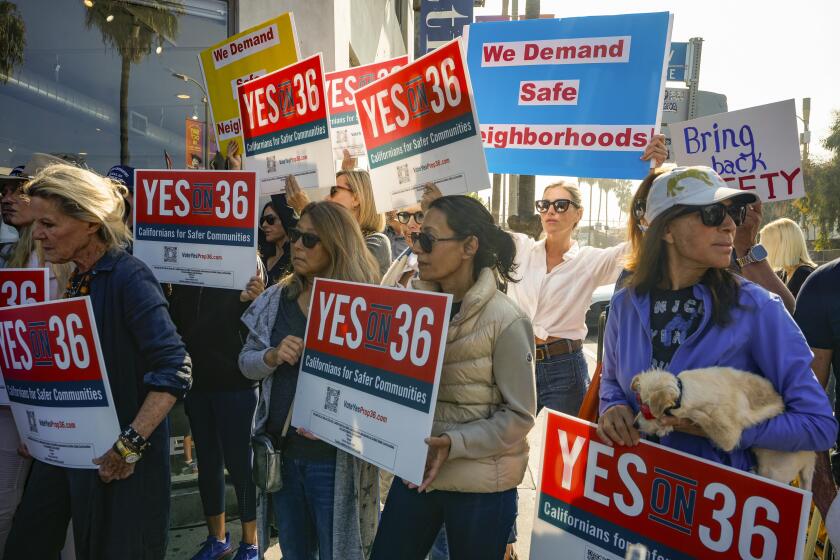First casualty of war
- Share via
IT IS JUST a coincidence, but fortuitous nevertheless, that the Democrats forced the Senate into a special secret session to discuss how we got into the war in Iraq during the same week that we finally learned the nation was deliberately misled about the famous “Tonkin intercepts” that helped lead us into Vietnam more than 40 years ago.
What worried the Democrats about Iraq turns out to be exactly what happened in Vietnam. We know now, thanks to one brave and dogged historian at the National Security Agency, that after the famed Gulf of Tonkin “incident” on Aug. 4, 1964 -- in which North Vietnam allegedly attacked two American destroyers -- National Security Council officials doctored the evidence to support President Johnson’s false charge in a speech to the nation that night of “open aggression on the high seas against the United States of America.”
In fact, no real evidence for those attacks has ever been found. The entire case rested on the alleged visual sightings of an inexperienced 23-year-old sonar operator. Nevertheless, Johnson took the opportunity to order the bombing of North Vietnam that night and set the nation inexorably on a path toward the “wider war” he promised he did not seek. And administration bigwigs never admitted publicly that they might have acted in haste and without giving contradictory signals their proper weight.
On the contrary, military and national security officials scrambled wildly to support the story. The media cooperated, with lurid reports of the phony battle inspired by fictional updates like the one Johnson gave to congressional leaders: “Some of our boys are floating around in the water.”
The new study apparently solves a mystery that has long bedeviled historians of the war: What was in those famous (but classified) North Vietnamese “intercepts” that Defense Secretary Robert McNamara was always touting to Congress, which allegedly proved the attack took place? Until recently, most assumed that McNamara and others had simply misread the date on the communications and attributed conversations between the North Vietnamese about an earlier Tonkin incident on Aug. 2, 1964, (when the destroyer Maddox was briefly and superficially under fire) to Aug. 4, the day of the phony attack. But, according to the New York Times, NSA historian Robert J. Hanyok has concluded that the evidence was deliberately falsified: there were translation mistakes that were not corrected, intelligence that was selectively cited and intercept times that were altered.
In revealing the story Monday, the Times reported that Hanyok’s efforts to have his classified findings made public had been rejected by higher-level agency policymakers who, beginning in 2003, “were fearful that it might prompt uncomfortable comparisons with the flawed intelligence used to justify the war in Iraq.”
And rightly so. The parallels between the Tonkin episode and the war in Iraq are far too powerful for political comfort. In both cases, top U.S. national security officials frequently asserted a degree of certainty about the alleged actions and capabilities of an adversary that could not possibly be supported by the available evidence. In both cases, it’s possible that the president might have been honestly misguided rather than deliberately deceptive -- at least at first. But in neither case would anyone admit the possibility of an honest mistake.
Johnson does not appear to have known that he was retaliating for an imaginary attack when he ordered U.S. planes to take off on the evening of Aug. 4. But, according to Alexander Haig, who was at work at the Pentagon that night, “Everyone on duty wanted to make it possible for the president to do what he wanted to do.” The director of the U.S. Information Agency, Carl Rowan, wondered: “Do we know for a fact that the North Vietnamese provocation took place? Can we nail down exactly what happened? We must be prepared to be accused of fabricating the incident.” McNamara said they would know for sure the next morning. But the speech couldn’t hold.
The phony Tonkin incident alone did not cause the Vietnam War. But the fact that the war was initially inspired by an attack that was, in fact, fabricated after the fact made the experience far more bitter for its victims. Doubts about the incident arose almost immediately. A 1966 article in the magazine Ramparts on Tonkin and the war caught the flavor of the times with its title, “The Whole Damn Thing Was a Lie.”
The Bush administration’s desire to keep secret the story of a 40-year-old deception -- a set of official lies, phony documents and trumped-up data that led the country into a debilitating, counterproductive and deceptive war -- simply to protect its own misdeeds is despicable, however typical. But thanks to Hanyok’s willingness to go public against the administration’s wishes, we know who was lying vis-a-vis Vietnam.
One day we may learn the truth about Iraq. Let’s hope for the sake of a future president who finds himself similarly tempted to mislead the nation into conflict that the warnings of history will be viewed with humility rather than hubris, and that the nation will be spared yet another war based on official lies.
More to Read
Get the L.A. Times Politics newsletter
Deeply reported insights into legislation, politics and policy from Sacramento, Washington and beyond. In your inbox twice per week.
You may occasionally receive promotional content from the Los Angeles Times.










